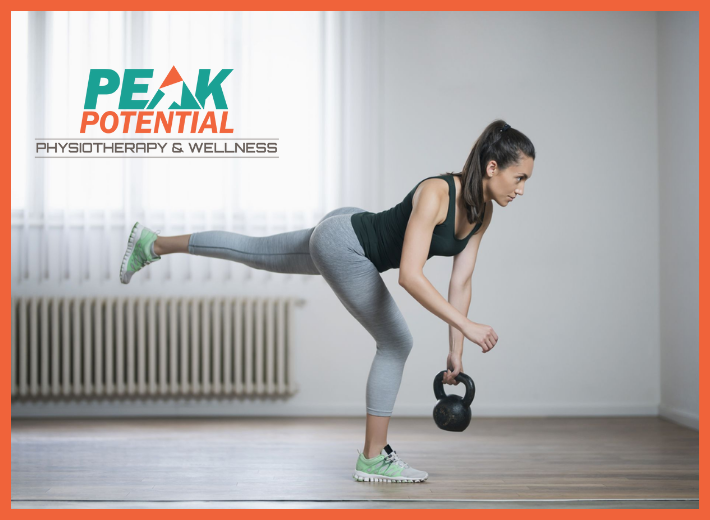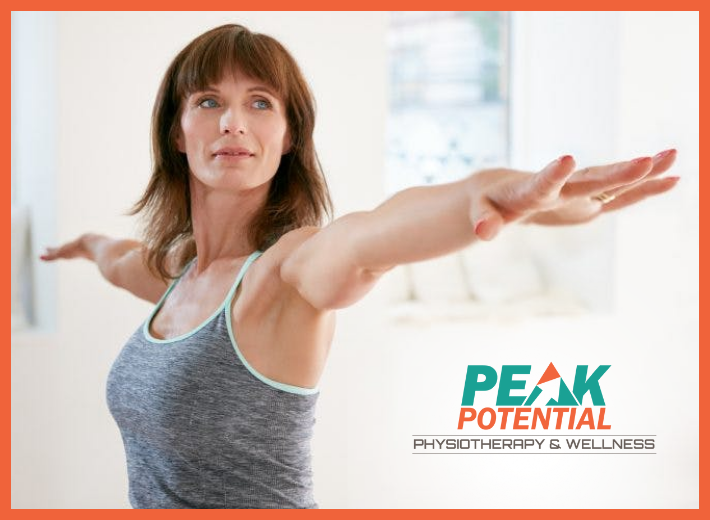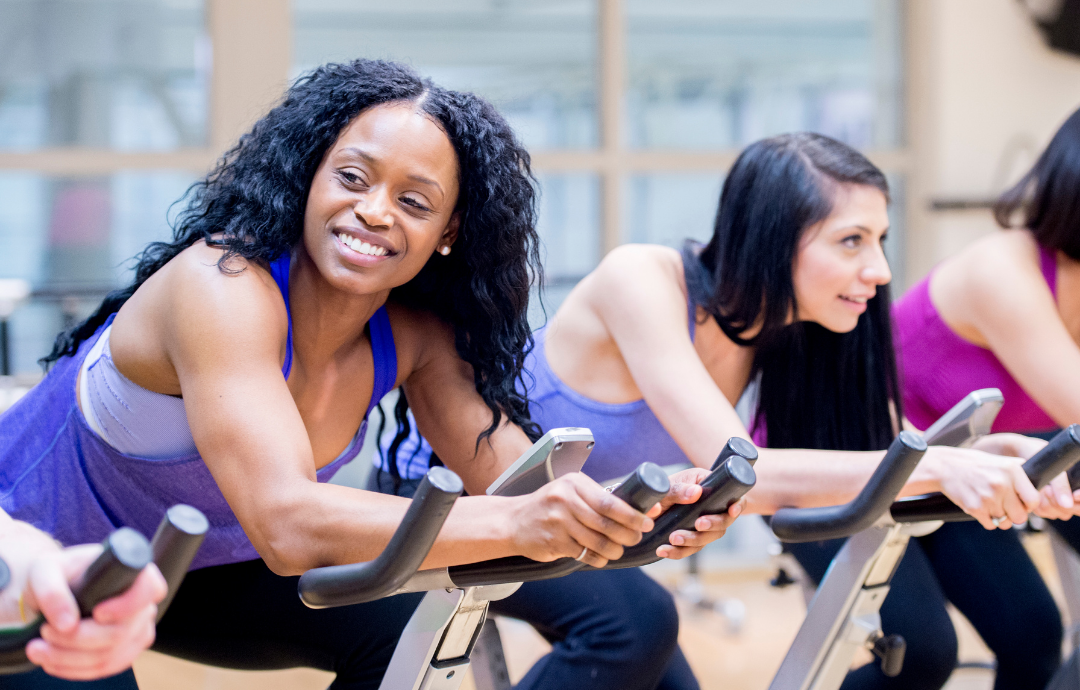Have you ever felt like life’s demands are pulling you in different directions, leaving you craving stability and equilibrium? We understand that achieving and maintaining balance isn’t just about physical posture; it’s a journey that impacts your entire well-being. Get ready to rediscover your center with our balance exercises for better health!
You may not think much about your balance—until you no longer have it, or you’re doing yoga and fighting hard not to topple out of eagle pose. But balance has to do with a lot more than just being able to stand on one leg in a yoga studio. Ultimately, it’s critical for everything you do, no matter your age or level of fitness. “Balance improves overall fitness, quality of life, and performance, and decreases risk of injury,” says Corey Phelps, personal trainer in Washington, DC, and founder of Cultivate by Corey.
Our under-appreciated ability to balance is a key part of what allows us to do everyday tasks, like walking, running, and getting up from a chair. Studies show that how well (or poorly) you perform these mobility skills strongly predicts how likely it is you’ll experience more serious events in the future, like falls, hip fractures, and hospitalizations, says Jonathan Bean, MD, MPH, professor of physical medicine and rehabilitation at Harvard Medical School.
“Balance, as it relates to function in daily life and activity, has more to do with the ability to quickly contract your muscles to stabilize or produce a desired movement,” says Joshua Bonhotal, MS, CSCS, strength coach and vice president of operations of Future Fit, a digital personal training service. “Having better balance means you’re able to stop under control, recover momentum, and react quickly. As you age, you lose your ability to perform the quick muscle contractions at twice the rate that general strength declines,” Bonhotal says. What’s more, if you’re not actively training to improve your balance, that decline could accelerate.
How Balance Actually Works
Balancing as we walk, run, jump, or stand requires muscle mass. In addition to giving us strength, our muscles help keep our bones and joints aligned so we remain upright. But balancing also calls for the interaction of three primary sensory systems: One is the visual, what we see—easy enough. Another is the somatosensory, which includes nerve receptors that enable us to feel and touch things and to have a sense of our body in space (known as proprioception). The third is the vestibular, a tiny but complex inner ear system that responds to gravity.
Input comes from all three systems, but for most of us, the dominant one is the visual. Seeing what’s in front of and around us triggers a series of neural messages that act as an immediate, reassuring fact-check: Everything in your environment is erect, pointing in the right direction, and therefore, you are too. “This is why so many people find it challenging to stand on one foot with their eyes closed,” says Fabio Comana, a lecturer at San Diego State University’s School of Exercise and Nutritional Sciences. “But that’s also why we’ll tell someone to close their eyes in balance training. If you take away the visual, the other two sensory systems can become stronger.”
Balance Changes as We Age
Accidental injuries are the eighth leading cause of death (right behind diabetes) for people 65 and older—but our balance can be compromised long before we’re eligible for Social Security. We may think of age-related balance challenges as the concern of sweetly unsteady grandparents, but as early as our 30s, we begin to lose that all-important muscle mass, as well as experience age-related deterioration in the visual, somatosensory, and vestibular systems.
“The decline is very gradual at the beginning, but by the time you hit 65, the curve drops steeply,” says Tanvi Bhatt, PhD, associate professor of physical therapy at the University of Illinois Chicago’s College of Applied Health Sciences.
Our visual acuity, including our depth perception and peripheral vision, begins to diminish, and “the proprioceptors embedded throughout the body become less sensitive,” Comana says. “So you’re not picking up information as quickly or as accurately, and you react more slowly to things that could make you fall.” Sensing our own slowness can make us apprehensive, which may be another reason the youthful spring in our step turns into a tentative shuffle. Also, vestibular nerve endings in the inner ear tend to degenerate over time.
To further complicate matters, technology is working against our balance, whatever our age. Blame it on the all-too-common habit of constantly staring into our phones. “One way we maintain balance is by looking at the horizon,” Comana says. “Typically in older adults, as their thoracic spine tends to hunch over, their field of vision changes.”
A crooked neck could make someone go from looking 300 feet ahead to 50. Plus, the physical misalignment weakens muscles and stability. But now, thanks to phones and computers, “these effects are becoming more evident in younger people—even the college students I teach,” Comana says.
How to Improve and Maintain Good Balance
The great news is, no matter how old you are, “with repeated practice, you can maintain or enhance your balance,” Bhatt says. It’s like learning to play an instrument. “You need to create appropriate neuromuscular connections—that is, links between your brain and muscles,” explains Jonathan Cane, an exercise physiologist and the founder of City Coach Multisport, an endurance-training service in New York City. “Then you need to practice to keep those connections from deteriorating.”
This is where balance training comes into play. While your balance will change from day to day—injury, muscular fatigue, soreness, and lack of sleep can all affect balance, Bonhotal notes—the key is to work on it regularly, daily if possible, but every other day at a minimum. You can start very small by standing on one leg while you brush your teeth, or try picking up dropped objects while keeping one leg elevated behind you (as you improve, challenge yourself by lifting the elevated leg even higher). If you’re short on time, space, or energy, an easy and effective balance builder is standing on one leg with eyes closed for as long as you can until you lose balance (time it!), then switch sides. Watch your time get longer with practice.
Generally, Bonhotal says you’re already getting a good dose of balance training if you’re doing moves like these when you exercise:
- Single-leg exercises (like step-ups)
- Exercises where you’re in split stances, like lunges
- Exercises where the load is unbalanced, meaning you’re holding or moving a weight only on one side
- Core exercises
If any of these are part of your regular fitness routine, you might only need five to 10 minutes of structured balance training on days you’re not doing any of them. But if you’re looking to get more targeted balance training into your life, here are more excellent exercises that specifically help build balance and stability.
Balance Exercises
Spinal Alignment
Experts agree that the first order of business is to make sure you can maintain a properly aligned spine to move effectively and without injury. To tell whether your spine is aligned, Comana says, “stand close to a wall, heels touching it. If you’re aligned, your tailbone, your shoulder blades, and the back of your head should all touch the wall in a neutral position, not tilted up or down.”
If, like most of us, you don’t touch the wall in all three spots, try this:
Grab a 36-inch foam roller or a rolled-up beach towel. Place it on the floor, then lie on it lengthwise so your head, spine, and tailbone all rest on top. (Your head should not tilt backward; if it does, place a firm pillow or second towel underneath it.) Bend your knees and rest your arms by your sides. Lie there for five minutes, allowing gravity to pull your shoulder blades down on either side. Try to practice this twice a day and repeat the wall check once a week until all the three points can touch.
Stationary Lunges
Start with feet hip-width apart. Step forward into a lunge, keeping your back heel off the floor. Bend both knees and lower your back knee toward the floor while keeping your spine straight. Lift back up into the starting position, then repeat with the opposite leg in front. Do 10 reps per side, alternating which leg is in front. (If you want, add in weights as you progress.)
Isometric Lunges (or Split Squats)
Start on the floor in a half-kneeling position, with your right knee and shin down and left foot planted firmly on the floor in front. (Check that both knees are at 90-degree angles and hips are aligned.) Keeping your right foot on the ground, bring your right knee just barely off the ground and hold this position (it will look like the bottom half of a stationary lunge). As you hold, keep the chest lifted so shoulders stay in line with hips.
Start by holding for five to 10 seconds per leg, building to 30 seconds without having to rest. Do two to three sets per leg. For more of a challenge: Work your way up a little bit at a time until you can hold for five minutes per leg.
Single-Leg Romanian Deadlift
Start with feet hip-width apart. If you can, balance on one foot. If you feel unsteady, begin by placing one foot about two foot-lengths behind the other. The knee of the supporting (or front) leg should be slightly bent. Maintain a straight back and hinge from the hips while reaching forward with both arms extended toward the floor. Return to standing position and repeat on the other foot. (If you want, add weight as you progress.)
High Plank With Shoulder Taps
Start on the floor in a high plank position with your hands positioned slightly wider than your shoulders. (To make it easier, bring knees down to the floor like you would for a modified push-up position). Brace your core, lift your right hand off the ground and tap your left shoulder. Slowly release your hand right to the ground and switch sides, continuing to alternate tapping one hand to the opposite shoulder. Try not to let your weight shift or hips rock from side to side. Do 10 reps per side.
Struggling to maintain balance? Position your feet wider. For more of a challenge, bring your feet together or do the exercise with one foot off ground.
Bird Dogs
Start on all fours with wrists aligned under your shoulders and knees aligned under your hips. Engage your core and lift and extend your left arm forward as you simultaneously extend your right leg behind you. Keep your back flat like a table and straight, not rotated, even as you raise each leg (it’s helpful to do this move in a mirror). Hold for five counts. Repeat with the opposite arm and leg. Alternate sides, doing five reps on each side.
Curtsy Lunge With Oblique Crunch
Stand with your feet hip-width apart and touch your fingertips to your ears with elbows out wide. Cross your right leg behind you and lower the right knee until it’s about 1 to 3 inches off the ground (this is a curtsy lunge).
Keeping weight and balance on your left leg, rise and bring your right leg up toward your right elbow (careful not to rotate the hips), bending your torso slightly to the right (into a standing oblique crunch). Release to start and repeat 12 times. Switch sides and repeat.
Standing Crunch With Under-Leg Clap
Stand with your feet together. Shift your weight to the right foot and lift the left leg in front of you to hip height, with your knee bent to a 90-degree angle. Lift your arms straight overhead and press your hands together. Bend your torso forward as you clap your hands under your left leg then release and bring your arms back up overhead, keeping your left knee raised. Repeat 10 claps on one side (without putting your left foot down). Switch sides and repeat.
Start your journey toward balance today! Join us at Peak Potential PT and experience the transformative effects of expert-guided balance exercises. Call us today at 901.316.5456 to schedule an evaluation. Follow us on Instagram @peakpotentialpt for more tips and information on physical therapy.
Reference: [https://www.realsimple.com/health/fitness-exercise/balance-exercises]










